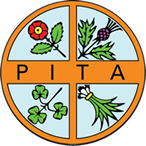25 June 2024: It has been more than 25 years since the first edition of "Pigments for Paper" was released. During that time, the paper industry has evolved significantly due to technological advancements and the growth of the internet. Digital printing presses, which were in their early stages back then, are now expanding at a much faster pace compared to traditional methods.
The increase in e-commerce has also led to the expansion of paperboard. Therefore, the latest edition of the book, titled "Pigments for Paper and Paperboard," encompasses these changes and reflects the broadening scope of the industry. It contains the latest information on the various pigments used in paper coating and filling.
The Addition of Mineral Pigments
According to the book’s editor, Dr. Prakash Malla, retired director of R&D at Thiele Kaolin Company, "This new edition focuses on biobased and non-biobased aqueous dispersions, as traditional barrier materials are being phased out due to their environmental impact. The inclusion of various mineral pigments provides opportunities for developing cost-effective coatings with enhanced barrier performance while improving the recyclability of these materials for both food and nonfood packaging applications."
Dr. Malla also noted that, in addition to being a valuable tool for professionals, the new edition “serves as a reference text for college students and professors in paper science and engineering, materials science, economic geology, mining and mineral processing engineering, and related programs.”
Whether you're a seasoned professional in the pulp and paper industry, a student exploring the world of paper science and engineering, or a librarian, this book serves as both an introductory guide and a practical reference. Featuring 13 chapters contributed by 12 new authors, including Dr. Malla, this new edition explores 10 different pigments essential to the papermaking process.
Highlights of this edition include:
- An overview of coated paper and the pivotal role pigments play in enhancing the performance attributes of coated paper/paperboard.
- Detailed insights into various pigments, from kaolin clays to synthetic plastic pigments, covering their physical and chemical properties, manufacturing processes, and impact on coated sheet properties.
- Exploration of how different pigments affect the printability and overall performance of coated paper and paperboard.
G. W. Brindley Clay Science Lecture Award
Most recently, Dr. Malla was honored with the G. W. Brindley Clay Science Lecture Award at the 61st Annual Meeting of the Clay Minerals Society in Honolulu, Hawaii, June 3-6, 2024. The award is presented to a clay scientist who brings new ideas and is involved in innovative research.
Dr. Malla holds a Ph.D. degree in Clay Mineralogy and Clay Chemistry from Rutgers University where he studied the layer charge properties of expandable 2:1 clay minerals. He also spent five years working in the area of material science and engineering at Pennsylvania State University where he developed special classes of nanoporous materials from pillared clays, silica gels, and zeolites for dehumidification applications. He is the inventor or co-inventor of 16 U.S. patents and serves as guest lecturer at many events annually. He has been an active TAPPI member since 1992, and a TAPPI Fellow since 2018, serving on numerous division and technical programming committees as well as working on Technical Information Papers (TIPs) and test methods.
To review the book’s table of contents and/or to purchase “Pigments for Paper and Paperboard,” visit the TAPPI website.
